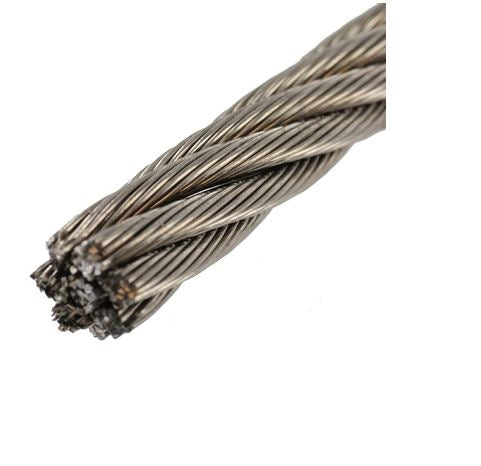
What is Stainless Steel?
*This is the fourth in a four-part series about steel used in rigging supplies and rigging hardware. Visit US Cargo Control to see our entire selection of rigging supplies & rigging hardware.
There are many different types of stainless steel, and it might be the most commonly known form of steel because even the name sounds strong and pure. Stainless steel is a form of alloy steel but instead of being mixed with carbon, it is mixed with chromium – and in fact is usually even more than 10% chromium. While there is some carbon in stainless steel, it is an extremely low percentage.
What sets stainless steel apart?
Stainless steel is known for being incredibly rust resistant, even more so than zinc-covered steel. This type of resistance is inherent, so it won’t flake away like carbon steel can over time. It has what can best be described as a “self-healing” surface.Stainless steel classifications
There are many different classifications of stainless steel, and each one has different properties of note. The four major classifications of stainless steel include:- 200 Series Austenitic
- 300 Series Austenitic
- 400 Series Ferritic
- 400 Series Martensitic
These four series aren’t just by themselves. Each one has a variety of alloys. The 200 series has five alloys, the 300 series has 15 alloys, the 400 series Ferritic has eight alloys, while the 400 series Martensitic also has eight alloys.
Stainless steel in rigging
The two main forms of stainless steel used for rigging are type 304 and 316, both from the 300 Series Austenitic. These alloys are a chromium-nickel alloy of stainless steel that is known for its extremely high strength, resistance to corrosion, and for being non-magnetic. The T304 offers excellent corrosion resistance so it’s a popular choice for rigging applications. However, the T316 is the preferred choice for coastal areas or when saltwater is involved.
Corrosion risks
While stainless steel offers superior corrosion resistance over regular metals, there are situations where stainless steel can corrode despite its natural tendency not to.
Pitting.
Corrosion from pitting is a localized form that can result from extended exposure to particular environment- specifically those that contain chlorides. Crevice. Another localized type of corrosion, this can occur if oxygen levels are low in a crevice area. This is most common in nuts, washers, screw threads, and bolt shanks.
Galvlanic.
This type of stainless steel corrosion can happen when metals that have dissimilar properties come in contact within a common environment such as condensation, rain, etc. The extent of the corrosion will vary with a variety of factors (temperatures, surface areas, etc.). To illustrate, a common example is with stainless steel and aluminum.
Side by side in a dry environment, these metals will not react to each other. However, when side by and side and exposed to rain, corrosion will occur. A sealant or primer can be applied to keep the water from penetrating and interacting between the two surfaces.
Stress cracks.
Corrosion based from stress cracking combines both specific environments and tensile stresses. For more information on steel used in the rigging industry, see:


